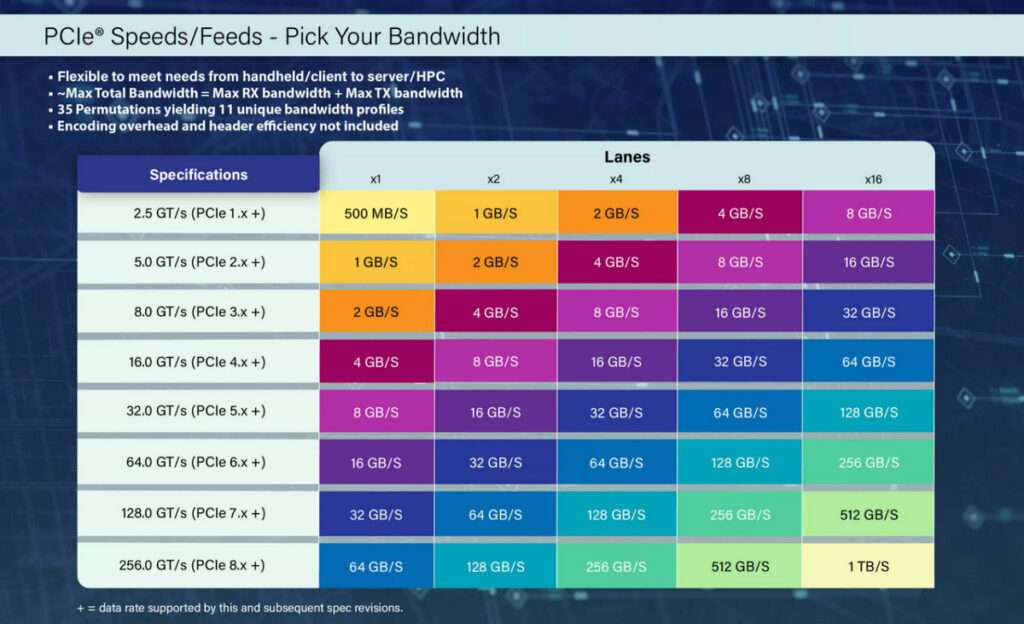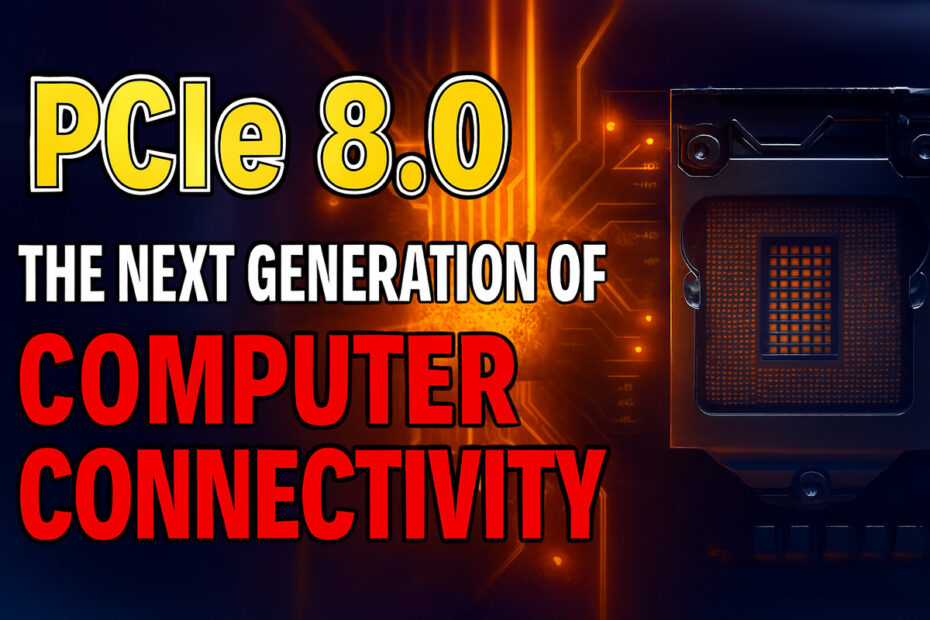If you’ve been following the evolution of computer hardware, you’ve probably noticed how everything keeps getting faster. Graphics cards push higher frame rates, SSDs load games in seconds instead of minutes, and processors handle increasingly complex tasks. Behind many of these improvements lies a crucial but often overlooked technology called PCIe (Peripheral Component Interconnect Express) – the highway that connects your computer’s components together.
The latest development in this story is PCIe 8.0, and it promises to be quite remarkable. Members of PCI-SIG (the organization that develops these standards) can now access the 0.3 draft specification, giving us our first official glimpse into what this technology will accomplish.
PCIe Evolution Pattern
Since the very beginning with PCIe 1.0, each new generation has followed a simple but powerful rule: double the total bandwidth of the previous version. More lanes mean more cars can travel simultaneously, just as more bandwidth means more data can flow between your computer’s components at the same time. PCIe 8.0 continues this doubling tradition, promising eight times the bandwidth available to today’s most advanced PC components.
Where We Stand Today
Most consumer computers currently rely on PCIe 3.0 or 4.0 technologies. PCIe 3.0 operates at 8 gigatransfers per second (GT/s), while PCIe 4.0 reaches 16 GT/s. When you connect a graphics card using the standard x16 slot configuration, these speeds translate to 32 GB/s and 64 GB/s of bandwidth, respectively.
The components available today support PCIe 5.0, which significant leap forward at 32 GT/s and up to 128 GB/s of total bandwidth. Many of the fastest SSDs currently on the market take advantage of this standard, with some achieving read speeds that exceed 10 GB/s – fast enough to load massive game worlds or complex software applications almost instantly.
PCIe 6.0 and 7.0
The consortium finalized PCIe 6.0 specifications in early 2022, enabling 64 GT/s and up to 256 GB/s of bandwidth. While the standard is complete, real-world implementation takes time. Testing of the first SSDs using this protocol only began this year, with impressive early results including a Micron storage expansion card that achieved a 30.25 GB/s transfer rate.
PCIe 7.0 represents another doubling, reaching 128 GT/s and 512 GB/s of bandwidth. This standard recently achieved its final specification, though practical implementation remains several years away. A live compliance program for PCIe 7.0 is scheduled for 2028, giving manufacturers time to develop and test compatible hardware.

The PCIe 8.0 Vision
If development proceeds according to current timelines, the 1.0 specification for PCIe 8.0 could arrive by 2028 as well. Operating at 256 GT/s, this upcoming protocol has the potential to achieve something that sounds almost science-fictional: breaking the terabyte-per-second barrier on x16 lanes with bi-directional connections.
To put this in perspective, imagine transferring an entire 4K movie in less than a second, or loading the most complex software applications faster than you can blink. This level of performance opens doors to computing scenarios that are difficult to imagine with today’s hardware limitations.
Maybe you would like other interesting articles?

